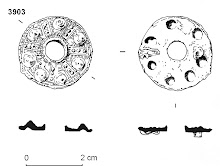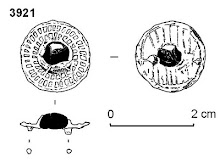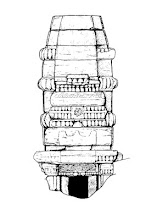Urban Archaeology demonstrated its fast responses, flexibility and value with its very first sub-contract in August 2008 on a site just outside of the City of London in Hackney.
Following a phone call from Archaeology South-East (ASE), a major south-eastern archaeology unit, Chiz Harward was on site at 8am the next day assisting with an evaluation, and then maintaining an intermittent watching brief on site works: Chiz was able to meet the demands of an evolving site programme and methodology, liaise with ASE, the archaeological consultant and the main contractor, and maintain a watching brief on underpinning, demolition works and site clearance.
Despite the presence of significantly more archaeological remains than had been originally expected, Chiz's detailed knowledge of the local archaeology and years of experience working with construction companies meant that the site works and archaeology could proceed hand-in-hand with the minimum disruption to programme. After the initial evaluation the watching brief evolved seamlessly into a further evaluation for a crane base, and then full excavation of the crane base with a small team of archaeologists from the parent unit.
The site archive for the first package of works was checked and completed on site, and text sections written to ASE's house style for the works supervised by Chiz Harward. This was all delivered to ASE for integration into the final report.
The site had been partially basemented in the Victorian period, but because the street level had been raised by over 1 metre in the 17th-century, archaeological strata survived beneath the basements as well as to their rear. The site was an open area in the Roman period, with a possible road-side ditch and large quarry pits containing waterlogged material. This was sealed by a medieval back-garden soil through which refuse pits had been dug. A masonry boundary wall may be originally medieval in date. The masonry wall was rebuilt with Tudor bricks, associated with a Tudor garden soil and further pitting. The boundary wall continued in use after the 17th-century groundraising, with a large culvert, cesspit and soakaway associated with one of the 17th-century brick houses built on the site.
Subscribe to:
Post Comments (Atom)














No comments:
Post a Comment